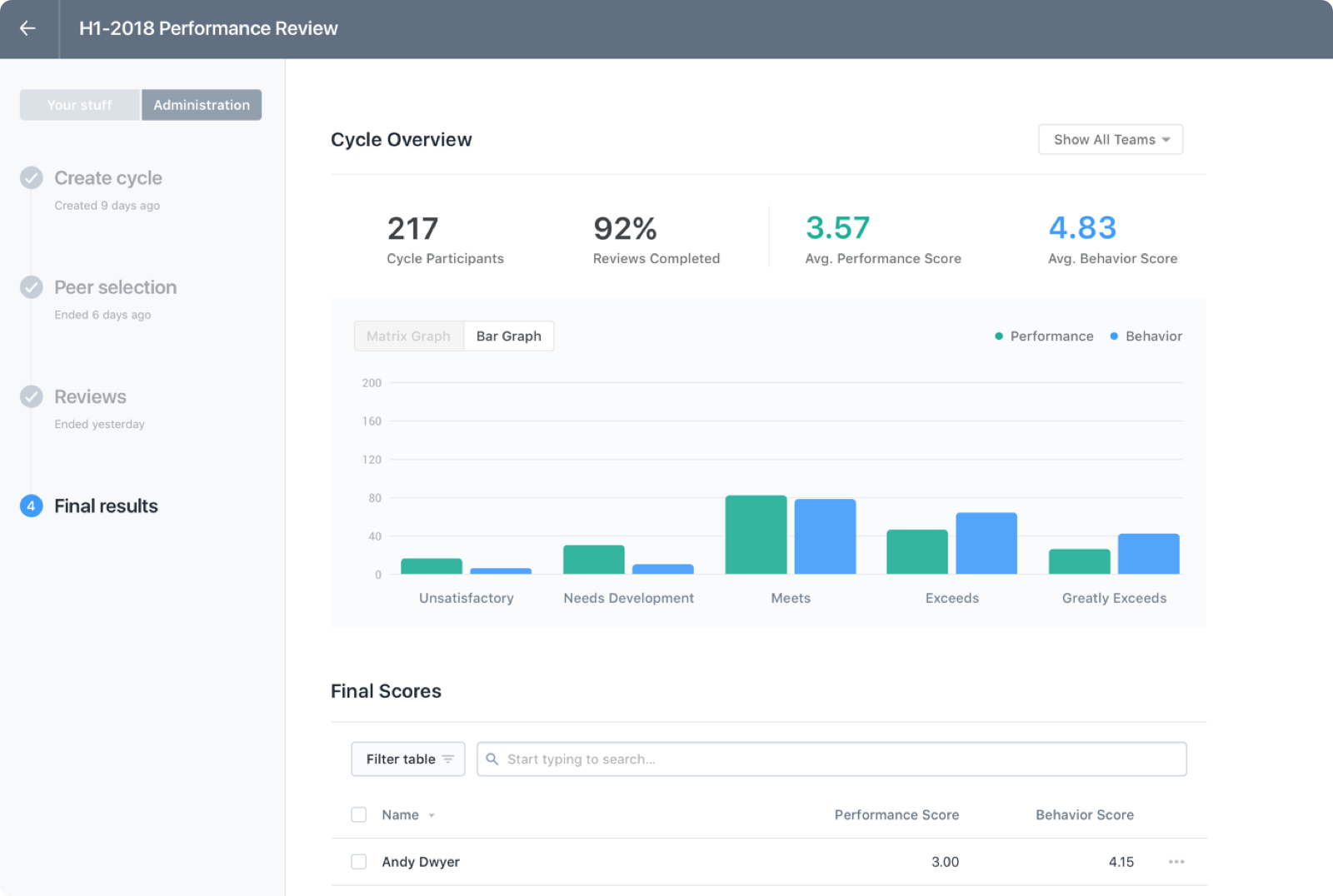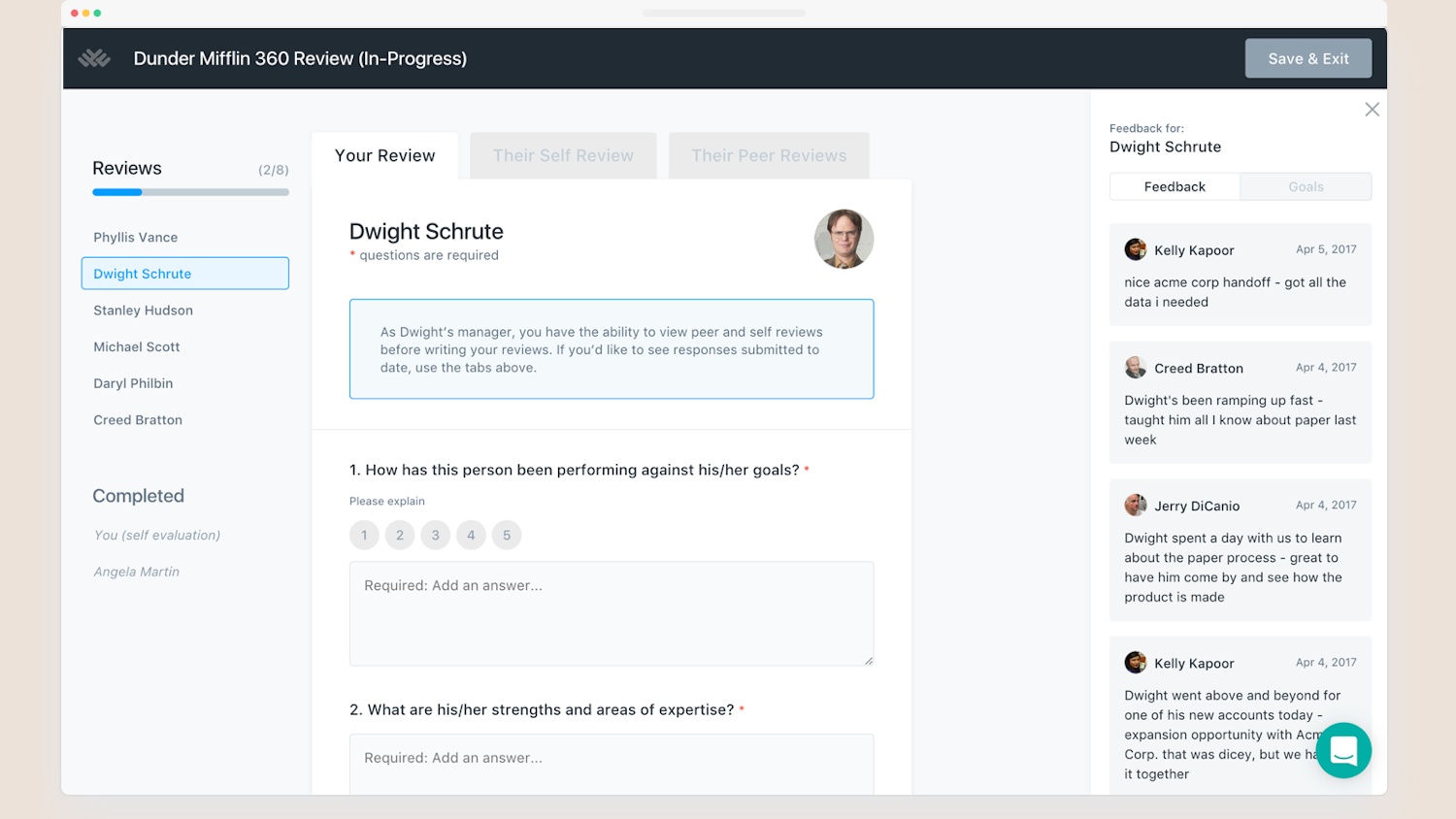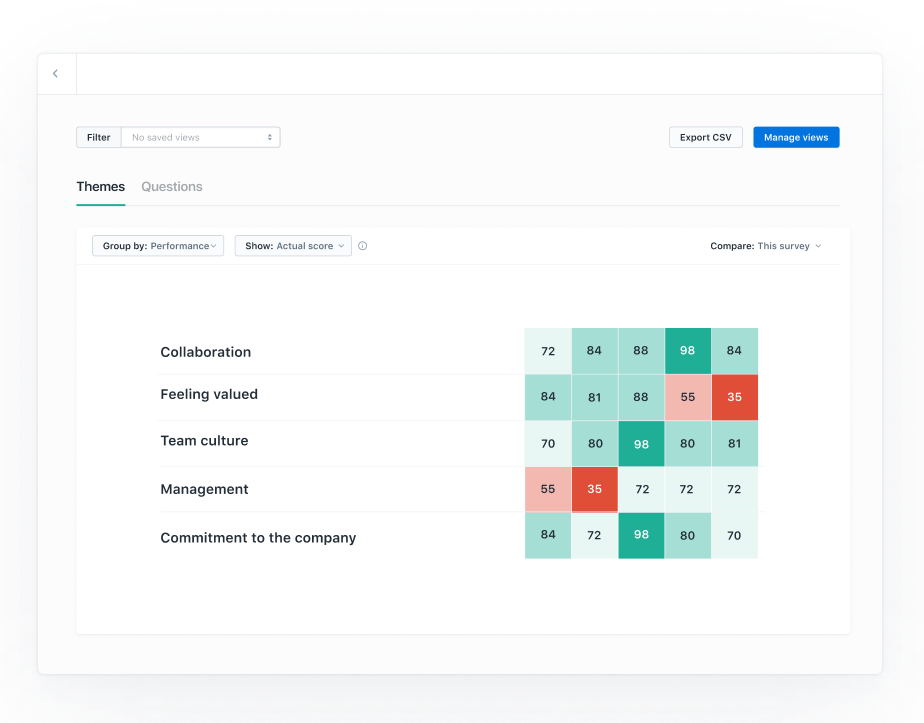Human resource management tools are powerful systems that help specialists gain new hiring and retention possibilities. But with so many of them on the market, where does Lattice stand? Our technical and use-case review of the Lattice Software suite has all the aspects covered so that you can make an informed decision. So, let’s not dabble any further and go straight to the nitty-gritty stuff.
What is Lattice Software?
Not to be confused with an abstract structure studied in the mathematical subdisciplines, Lattice is a powerful human resource management system designed to help HRs foster and attract talent. Just as its competitors, a cloud-based platform Lattice offers a wide range of features for handling both small and enterprise-level needs.

As a focus, the system delivers an industry-class performance review and goal management features. However, that is not the only benefit it brings to the table as it is also a good performance report tool. Whether it is a report on a single employee or a single task, Lattice is capable of tracking various metrics so that HR experts could address things on a personalized level.
The tool is currently being actively used by many big-name companies, including but not limited to Reddit, Slack, Asana, among others.
Core Functionality & Benefits
Now that you have a solid idea of what the system is all about, let’s take a closer look at the features and benefits it can bring to your organization. Also, as a pre-face, Lattice management platform functions are numerous, so instead of listing them one-by-one, we’ll group them into three categories: Performance, Engagement, and Analytics.
Performance
One of the key aspects of the system is that you can use it to help employees reach their maximum output without putting a strain on them. This is done by an automated system that scans employees for attendance, performance, and if present, the time it took them to complete the assigned task.
Furthermore, Lattice comes with a rewards system (which is tied to a gamification tool, more on that in a bit). You can ask what your people would like to see as a reward and set it up in the system. Lattice will then keep track of everything and notify employees personally that they are X amount of work away from reaching the main prize.
The system offers an incredible 1 to 1 feature. Essentially, the system gives you just enough information to create an agenda that you can then use during the conversation. As soon as the conversation starts, the tool will help you take notes, and store the comments inside the cloud. After the conversation is done, Lattice management platform will propose you to create a follow-up email where all key aspects of the preceded conversation will be stored.
On the employee side of things, the system will make it easy for them to send out feedback by establishing a dedicated suggestion/feedback center. This will completely get rid of the need for annual reviews as you can gather feedback round the clock, all day, and all year long. Lattice management platform doesn’t just provide a place to send reports but the means too. The system comes packed with a dedicated feedback tool that aims to encourage workers to send more opinionated and honest remarks.

Engagement
The second pillar of Lattice management platform is engagement. The software suite is incredible in this one. The engagement module offers not only a ton of features but enough adaptivity and granularity to make everything extremely personalized.
Take, for instance, the Employee Net Promoter Score, or eNPS for short. It allows you to ask employees work-related questions by giving them the option to scale and score their answers. A single question such as “On a scale 1 to 10, how likely you would recommend working here?” will allow you to learn who is a fan of their workplace and who needs attention. Based on the average score, you can also identify who will most likely promote your company.
The second system is Surveys and as you might have guessed, it allows you to send out questionnaires and forms to gather feedback. However, that is not all, as the tool comes with a monstrous number of pre-installed templates that you can use to benchmark your company culture, determine KPIs, learn about variables such as departments, manager performance, gender ratio, among other things. The tool is also incredible at helping you determine what your top-performers love, what they are driven by, and what they might not like, which can help you retain them.
Last is the Pulse system. As the name suggests, it allows you to learn about your business activities on a scale, and in real-time. The tool will contextualize data from the surveys and match it with real-time insights so that you can have a proper understanding of how things actually roll in your workplace. Also part of this system is the ability to compare previous results to see the overall growth rate. Finally, you can sort responses based on scores assigned by the employees and narrow down tendencies in certain areas using specialized filters.

Analytics
Comparatively, this is Lattices’ smallest module but it doesn’t mean that it is underdeveloped. Far from it, in fact. The analytics system allows you to do five specific tasks, that is Measure, Understand, Track, Visualize, and Build. Let’s take a look at each of these.
Measure Engagement — This system will send out anonymous surveys to employees where they will have to fill out a few questions such as a sense of belonging, quality of leadership, the likelihood of changing something, etc. The results will be displayed through a heatmap that’ll show you how many people gravitate towards that or the other answer.
Understand People — Numbers don’t lie but they do not provide any context. This system will help you learn about your high and low performers and what makes them work the way they do. By learning the key performance points, you can adjust the work accordingly, as well as to adapt the core driving factors to low performers.
Track Performance — One of the core ideas of Lattice is to develop a proper feedback loop in which employees are not just not afraid to send suggestions but encouraged. This system will keep track of feedback tendencies and will try to devise a method in which your employees are enticed to send out reports even more often.
Visualize Management — If numbers aren’t your thing and you want to see how certain metrics stack up, the system will display data the way you see fit. Another great function of this stem is that it visualizes whether all interviews, 1 on 1 meeting, and surveys are carried out in time as intended.
Build Culture — The last part of the tool will show you how well does your culture work, what people think about it, and whether there are any substantials gaps not filled.

Disadvantages
We’ve discussed the features and the benefits so let’s check its flaws that might make you want to look for a Lattice alternative. As a disclaimer, we won’t be getting into specifics but rather take a look at things that are getting in the way of good productivity. We’ll also be including both admin and user feature issues.
Feedback Requests. The first con we’d like to point out comes from the users’ perspective. It is possible to request feedback from your superiors but it isn’t exactly easy to do so. The person requesting has to go through a bunch of menus and if they aren’t set up correctly, might not even appear.
Hard to Configure. If you send out someone to use the system without them having prior knowledge or training, they will have a very hard time figuring things on their own. It takes time and effort to make everything work and there are no introductory emails whatsoever. However, once sorted out, the technology will work as intended and streamline things as needed.
Subject-Based Reviews. Often, work is based on subjects and there is no way to specify this for the manager or the worker. Then there is the lack of the ability to choose the fields/questions to comment on which in some cases, might result in a declined interview.
Not Suited For Small Companies. The tool doesn’t work well in a small company. And it is not about pricing but rather the feature set. A lot of the functionality is tailored for medium to large-sized companies and is often left untouched by smaller companies. Take for instance the manager to employee attachment system. You can’t have more than one manager attached to an employee, which is something relevant to smaller-sized businesses.
Tech Details
We usually outline the core technical makeup of the tool in this section. This means we take a look at how many languages the tool supports, what kind of deployment methods it has, and what platforms are supported officially. Why officially, well if unofficially, all platforms are supported but that doesn’t mean the tool will work as intended. Anyways, here’s how the system looks like on paper:
Table 1: Lattice Technical Make-up
| Deployment method | Languages supported | Company size supported | Pricing options | Platform Support |
| Only Cloud-Based | Only English | Large Enterprises Medium Business |
Quote-based | Windows Mac Web-based |
Well, by the looks of it, Lattice platform is pretty thin in terms of technical prowess. The tool only supports one language and doesn’t have any other deployment methods. The pricing options are doable but overall, it is quite puzzling that this is a human resource tool that doesn’t consider other demographics.
Pricing & Plans
As you already know, the company offers only quote-based purchase options. This is fine for as long as you like the plans feature set. Speaking of which, here’s what the company offers to its customers:
Table 2: Lattice Platform Pricing Options
| Performance $9 per person, per month. Billed annually. |
Performance & Engagement $12 per person, per month. Billed annually. |
Enterprise Custom Price |
|
Everything from the previous plan plus
|
|
For the money, Lattice performance management options have a lot of value on offer. The customer enterprise suite is good on paper but we suggest that you ask the vendor a bit more than is already available.
User Reviews
And now for the final part of our review, user reviews. We like to include these as they often highlight things that aren’t exactly visible from the get-go, things that require a ton of people to execute for instance. Thus, here are three user reviews we’ve gathered from popular resources such as G2 Crowd and Capterra.

Capterra
Pros: The richness of the information presented is a game-changer for us. With it, we can deliver more accurate targeting of potential customers, noticeably decrease the length of the sales cycle, and the quantity of pipeline generation required to find a customer that is likely to buy.
Cons: Throwing someone into the system without any training and having them set themselves up is a poor decision. But having the option to utilize the account manager has been helpful.
G2
Pros: One of the best things about the tool is the performance module. It contains critical components and employee needs that you can use to start charts and track performance such as goals, 1:1's, and performance reviews. The public praise mechanism by which our team can provide continuous feedback is also superb. It can be routed to our shared Slack channel where everyone can see that someone gets props!
Cons: There's a lot of hierarchy-based reporting-structure functions and language baked into the system which isn't relevant to us. We use a pretty small Canadian HRIS so there was no direct integration available. We also use Asana for project management and there is no integration with that tool right now.
Final Takeaway
Lattice as an HRM tool works wonders. It has everything you might need to deliver exceptional HR services. However, its lack of languages and a strong focus on bigger companies does narrow its appeal down. Besides, it's not the best pick for businesses looking for free HR software. Yet, if you are not small and can pass the language barrier easily, this is a tool not to be discarded.
If you already set up your mind and need to move your data to Lattice, we can help you out. Just drop us a message and we’ll send our experts right your way but in the meantime, thank you for joining! We’ll see you next time!
Made your choice?
Try out new platform.





